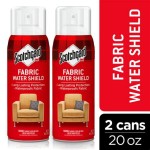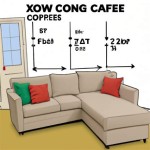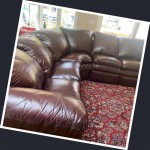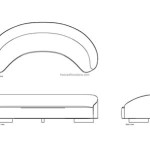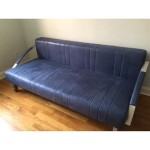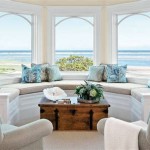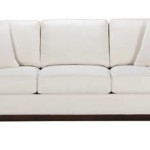Danish Teak and Leather Sofas: A Timeless Blend of Form and Function
Danish teak and leather sofas represent a significant movement in mid-century modern furniture design. Characterized by clean lines, organic forms, and a focus on both aesthetics and comfort, these sofas have become enduring symbols of Scandinavian design principles. Their popularity stems not only from their visual appeal but also from the quality of materials and craftsmanship that define them. This article will explore the key characteristics, construction materials, historical context, and factors to consider when acquiring a Danish teak and leather sofa.
The Hallmarks of Danish Modern Design in Sofas
Danish modern design, which flourished from the 1940s to the 1970s, prioritized functionality, simplicity, and the use of natural materials. Danish teak and leather sofas embody these principles. The designs often feature a minimalist silhouette, eschewing excessive ornamentation in favor of clean, flowing lines. The use of teak wood, valued for its durability and rich color, is a defining characteristic. The wood is typically crafted into slender, tapered legs and frames that provide structural support while contributing to the sofa's elegant appearance. Leather upholstery, used for seating and backrests, adds a touch of luxury and complements the warmth of the teak wood.
Ergonomics are also a crucial element of Danish modern sofa design. The seating is typically designed to provide adequate support and comfort, taking into account the natural curvature of the human body. The angle of the backrest, the depth of the seat, and the firmness of the cushions are all carefully considered to ensure a comfortable seating experience. This focus on both aesthetics and user comfort is a defining feature of Danish modern furniture. Many sofas utilize a system of webbing or springs beneath the cushions to enhance support and resilience.
The overall aesthetic is one of understated elegance. The emphasis is on the inherent beauty of the materials and the craftsmanship employed in their creation. The absence of unnecessary details allows the sofa to blend seamlessly into a variety of interior styles, from minimalist modern to more eclectic settings. This adaptability is a key reason for the enduring popularity of Danish teak and leather sofas.
Materials and Construction: The Foundation of Quality and Longevity
The materials used in the construction of Danish teak and leather sofas are selected for their durability, aesthetic appeal, and sustainability. Teak wood, a tropical hardwood known for its resistance to moisture and decay, is the primary material used for the frame and legs. Its natural oils make it resistant to insects and fungal growth, ensuring the sofa's longevity even in humid environments. Teak also possesses a warm, golden-brown hue that deepens with age, adding to its visual appeal.
The leather used for upholstery is typically high-quality, full-grain leather, prized for its natural grain patterns and durability. Full-grain leather retains the natural imperfections of the hide, giving each sofa a unique character. It is also more breathable and develops a natural patina over time, enhancing its aesthetic appeal. Different types of leather, such as aniline and semi-aniline, may be used, depending on the desired texture and level of protection.
The construction of these sofas involves meticulous craftsmanship. The teak frame is typically joined using mortise-and-tenon joints, which provide exceptional strength and stability. The leather upholstery is carefully sewn and fitted to the frame, ensuring a snug and seamless fit. High-quality foam or down cushions provide comfort and support. The attention to detail in both the materials and construction contributes to the sofa's durability and longevity, making it a worthwhile investment.
Often, the internal support structure utilizes a system of coil springs or woven webbing to provide a comfortable and supportive seating experience. The webbing is typically made of natural materials such as jute or linen, chosen for their strength and resilience. These internal components contribute to the overall comfort and lifespan of the sofa, ensuring that it will provide years of use.
Historical Context and Prominent Designers
The rise of Danish modern design was influenced by a confluence of factors, including the post-war economic recovery in Denmark, the availability of high-quality materials, and a renewed focus on functionalism and aesthetics. Danish designers sought to create furniture that was both beautiful and practical, reflecting the Danish emphasis on quality of life and well-being. The movement was also influenced by earlier design movements such as Bauhaus and the Arts and Crafts movement.
Several prominent Danish designers played a pivotal role in shaping the aesthetic of Danish teak and leather sofas. Finn Juhl, known for his sculptural and organic designs, created sofas that were both visually striking and comfortable. Hans Wegner, a master of chair design, also designed sofas that reflected his commitment to craftsmanship and functionality. Børge Mogensen, another influential designer, focused on creating simple, functional furniture that was accessible to a wider audience.
Arne Jacobsen, Poul Kjærholm, and Grete Jalk are other notable designers whose work contributed to the Danish modern aesthetic. Each designer brought a unique perspective to the design process, but they all shared a commitment to quality, craftsmanship, and functionality. Their designs have become iconic symbols of Danish modern design and continue to be highly sought after by collectors and enthusiasts.
The influence of these designers extended beyond Denmark, shaping the landscape of mid-century modern furniture design worldwide. Their work has inspired generations of designers and continues to be relevant in contemporary interiors.
Key Considerations When Acquiring a Danish Teak and Leather Sofa
Acquiring a vintage Danish teak and leather sofa requires careful consideration to ensure its authenticity, condition, and suitability for the intended space. Several factors should be taken into account before making a purchase.
Firstly, it is essential to verify the authenticity of the sofa. Look for markings or labels from reputable Danish manufacturers such as France & Søn, Getama, or Fritz Hansen. These markings can provide confirmation of the sofa's origin and designer. Research the design to compare it to known examples of the model. Be wary of replicas or imitations that may not be made to the same standards of quality and craftsmanship.
Secondly, assess the condition of the teak frame and leather upholstery. Look for signs of damage such as cracks, splits, or warping in the wood. Check the leather for scratches, stains, or tears. Examine the joints to ensure they are still strong and secure. Consider the cost of restoration or reupholstery when evaluating the price of the sofa. A sofa in good original condition will typically command a higher price than one that requires extensive restoration.
Thirdly, consider the dimensions of the sofa and its suitability for the intended space. Measure the available space to ensure that the sofa will fit comfortably without overcrowding the room. Consider the overall style of the room and choose a sofa that complements the existing decor. The scale and proportion of the sofa should be in harmony with the surrounding furniture and architectural elements.
Fourthly, evaluate the comfort and support provided by the sofa. Sit on the sofa to assess the firmness of the cushions and the angle of the backrest. Ensure that the sofa provides adequate support for the back and legs. If possible, try out the sofa for an extended period to ensure that it is comfortable for prolonged use.
Finally, consider the provenance of the sofa. Knowing the history of the sofa can add to its value and appeal. Ask the seller about the sofa's previous owners and any restoration work that has been performed. A sofa with a well-documented history may be more desirable than one with an unknown past.
Acquiring a Danish teak and leather sofa is an investment in both style and quality. By carefully considering these factors, it is possible to find a sofa that will provide years of enjoyment and become a cherished heirloom.

Sofa Leather By Design Modern

Mid Century Danish Modern Leather Teak 3 Seater Sofa By Jens Juul Christensen For Jk Denmark 1960s At Pamono

Midcentury Danish Tan Leather Sofa Hire Al Granger Hertzog

Teak Sofa With Leather Upholstry

Fd130 Teak Sofa In Cognac Leather Peter Hvidt For France Søn Daverkosen Denmark 1950s

Sofa Leather By Design Modern

Mid Century Danish Modern Leather And Teak Loveseat

Teak Leather Sofa Mostly Danish Furniture Ottawa

Danish Teak Leather Sofa 1960s 126767

Danish Teak Leather Sofa By Arne Vodder For France Son 1960s At Pamono

